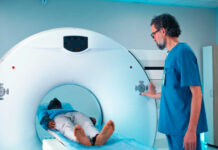
A repurposed anti-inflammatory drug shows remarkable promise in reducing both alcohol consumption and pain sensitivity, offering new hope for millions struggling with alcohol use disorder.
At a Glance
- Apremilast, an FDA-approved medication for skin conditions, reduced alcohol intake by more than half in study participants
- The drug addresses both excessive drinking and pain sensitivity, a dual approach that could improve treatment outcomes
- Pain perception may contribute significantly to the transition from alcohol use to dependence
- Long-term alcohol use can lead to chronic pain, creating a harmful cycle of self-medication and dependence
- Repurposing existing FDA-approved medications offers a faster pathway to new treatments for alcohol use disorder
The Alcohol-Pain Connection
According to World Health Organization data from 2016, while 57% of the global population aged 15 or older abstained from alcohol, consumption rates remain high in the Americas, Europe, and Western Pacific regions, where more than half of adults drink. For many individuals, what begins as low-risk alcohol use can progress to dependence and serious health consequences. Recent research has uncovered a critical factor in this progression: pain sensitivity.
Pain perception appears to play a significant role in the transition from casual alcohol use to dependence. Alcohol initially produces short-term pain-relieving (hypoalgesic) effects, which may lead some individuals to self-medicate with alcohol to manage discomfort or chronic pain. However, this creates a dangerous paradox.
A Promising Dual-Action Treatment
Researchers have identified apremilast, a medication currently approved for treating psoriasis and psoriatic arthritis, as a potential breakthrough treatment for alcohol use disorder (AUD). A preclinical study conducted by Scripps Research revealed that apremilast not only reduced alcohol consumption but also decreased pain sensitivity during withdrawal periods, addressing two interlinked aspects of AUD.
Apremilast is a phosphodiesterase-4 (PDE4) inhibitor that blocks an enzyme involved in inflammation. This anti-inflammatory action appears to be key to its dual benefits. In clinical testing, participants who received apremilast reduced their alcohol consumption dramatically, from approximately five drinks per day to just two—a reduction of more than half.
The Need for New Treatment Options
The development of new medications for alcohol use disorder has been stagnant for years. No new FDA-approved treatments have emerged since acamprosate, and existing medications offer limited efficacy. This treatment gap is particularly concerning given the complex relationship between alcohol use, withdrawal, and pain that can trap patients in cycles of dependence.
Beyond apremilast, researchers are exploring other anti-inflammatory medications for repurposing. Tigecycline, a tetracycline antibiotic, has shown promise in reducing alcohol consumption, alcohol-induced pain, and withdrawal symptoms in animal studies. Other candidates include GLP-1 receptor agonists like semaglutide and liraglutide, which have demonstrated potential in reducing alcohol-seeking behaviors.
Sex Differences and Personalized Treatment
An important dimension of this research involves understanding sex differences in pain perception and alcohol’s effects. Studies suggest that men and women may experience both pain and alcohol use disorder differently. Men may be at higher risk for developing AUD when self-medicating for pain, while the patterns of reduction in alcohol consumption with medications like apremilast show gender-based variations.
These findings highlight the importance of considering sex as a biological variable in both research and treatment approaches. Future therapies may need to be tailored differently for men and women to achieve optimal outcomes, moving toward more personalized medicine approaches for AUD treatment.
A Future of Expanded Treatment Options
The repurposing of FDA-approved anti-inflammatory medications represents a promising avenue for addressing alcohol use disorder and its associated pain sensitivities. By tackling both issues simultaneously, these treatments could significantly enhance recovery processes and improve quality of life for patients. The affordability and established safety profiles of repurposed drugs also make them attractive options for widespread implementation.
While further clinical trials are needed, particularly in people actively seeking treatment for AUD, these preclinical findings offer new hope. Expanded treatment options could help address AUD, which remains one of the most prevalent yet undertreated health conditions worldwide. By addressing both drinking behavior and pain simultaneously, dual-acting medications like apremilast may finally provide a more effective path to recovery for millions struggling with alcohol dependence.


















